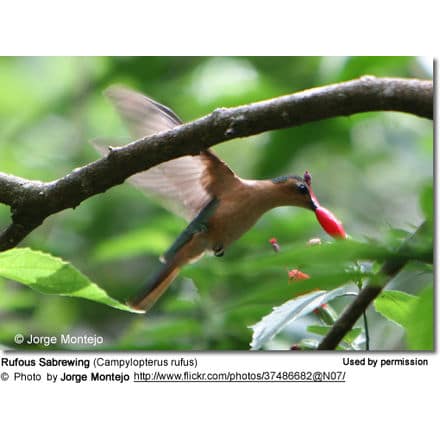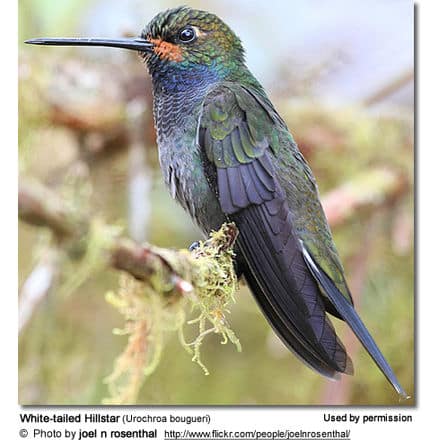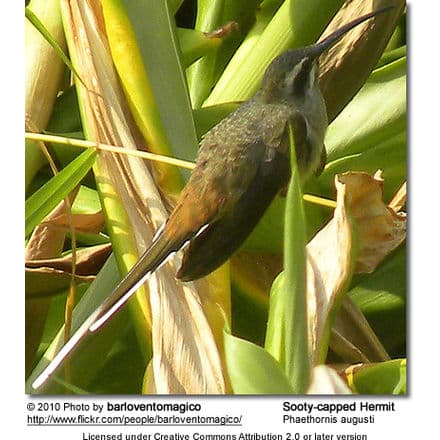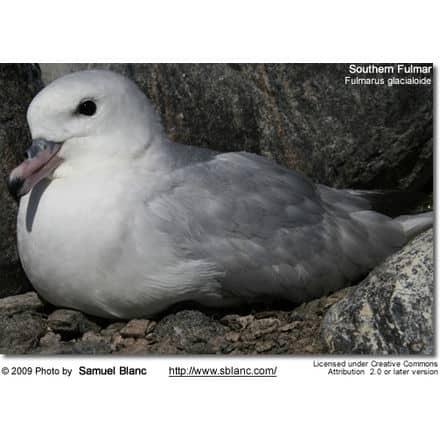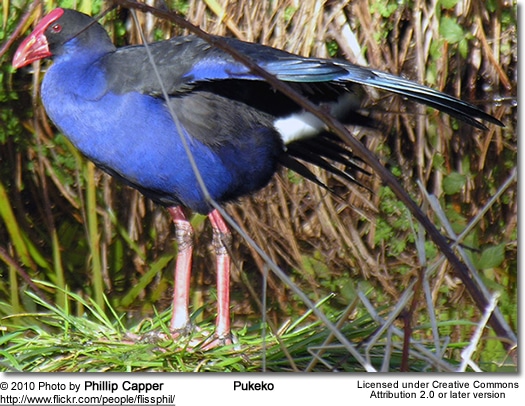Oilbird (Steatornis caripensis)
Oilbirds (Steatornis caripensis), also known as Guácharos, are related to the nightjars and are usually placed with these in the order Caprimulgiformes. It is sufficiently distinctive to be placed in a family (Steatornithidae) and suborder (Steatornithes) of its own; more recent research indicates that it should even be considered a distinct order (which does not yet have a valid taxonomic name).
The oilbird is called a “guácharo” or “tayo” in Spanish, both terms being of indigenous origin. In Trinidad it was sometimes called “diablotin” (French for “little devil”), presumably referring to its loud cries, which have been likened to those of tortured men.
Distribution / Range
This slim, long-winged bird is found in the northern areas of South America from Guyana and the island of Trinidad to Venezuela, Colombia, Ecuador, Peru, and Bolivia in forests and woodland with caves. It is a seasonal migrant, moving from its breeding caves in search of fruit trees. It has occurred as a rare vagrant to Costa Rica, Panama, and Aruba.
The Guácharo Cave was Venezuela’s first national monument, and is the centerpiece of a national park; according to some estimates, there may be 15,000 or more birds living there. Colombia also has a national park named after its “Cueva de los Guácharos”, near the southern border with Ecuador. Oilbirds have been reported in various other places along the Andean mountain chain, including near Ecuador’s Cueva de los Tayos and in Brazil: they are known to dwell as far south as the Carrasco National Park in Bolivia. Dunstan Cave, at the Asa Wright Nature Centre in Trinidad, is home to about 200 nesting pairs of oilbirds.
Description
The Oilbird’s feet are small and almost useless, other than for clinging to vertical surfaces. However, it is capable of hovering and twisting flight, which enables it to navigate through restricted areas of its caves.
This is a large bird at 41-48 cm (16-19″), with a wing span of 91 cm (3 ft). It has a flattened, powerfully hooked bill surrounded by deep chestnut rictal bristles up to 5 cm (2″) long. It is mainly reddish-brown with white spots on the nape and wings. The lower parts are cinnamon-buff spotted with white. The stiff tail feathers are a rich brown spotted with white on either side.
During the day these gregarious birds rest on cave ledges.
Diet / Feeding
This nocturnal species, uniquely, is a specialist feeder on the fruit of the Oil Palm and tropical laurels. All the other nightjars and their relatives are insectivores.
Nesting / Breeding
The nest is a heap of droppings, usually above water – either a stream or the sea, on which 2-4 glossy white eggs are laid which soon become stained brown. These are rounded but with a distinctly pointed smaller end and average 41.2 X 33.2 mm.
The squabs become very fat before fledging, weighing up to half as much as the adult birds do. They used to be harvested and rendered for oil, whence the name “oilbird”.
Calls / Vocalizations
Although the Oilbird forages by sight, it is one of only a few birds, and the only nocturnal one, known to navigate by echolocation in sufficiently poor light conditions, using a series of sharp audible clicks for this purpose. It also produces a variety of harsh screams while in its caves. Entering a cave with light especially provokes these raucous calls; they also may be heard as the birds prepare to emerge from a cave at dusk.
Background
The Guácharo Cave (Oilbird Cave), in the mountainous Caripe district of northern Monagas, Venezuela, is where Alexander von Humboldt first studied the species. The caripensis of the binomial name means “of Caripe”, and Steatornis means “fat bird”, in reference to the fatness of the squabs.
- French, Richard (1991). A Guide to the Birds of Trinidad and Tobago (2nd edition ed.). Comstock Publishing. ISBN 0-8014-9792-2.
- Herklots, G. A. C. (1961). The Birds of Trinidad and Tobago. Collins, London. Reprint 1965.
- Hilty, Steven L (2003). Birds of Venezuela. London: Christopher Helm. ISBN 0-7136-6418-5.
- Stiles and Skutch, A guide to the birds of Costa Rica ISBN 0-8014-9600-4
- Holland RA, Wikelski M, Kümmeth F, Bosque C, 2009 The Secret Life of Oilbirds: New Insights into the Movement Ecology of a Unique Avian Frugivore. PLoS ONE 4(12): e8264. doi:10.1371/journal.pone.0008264

